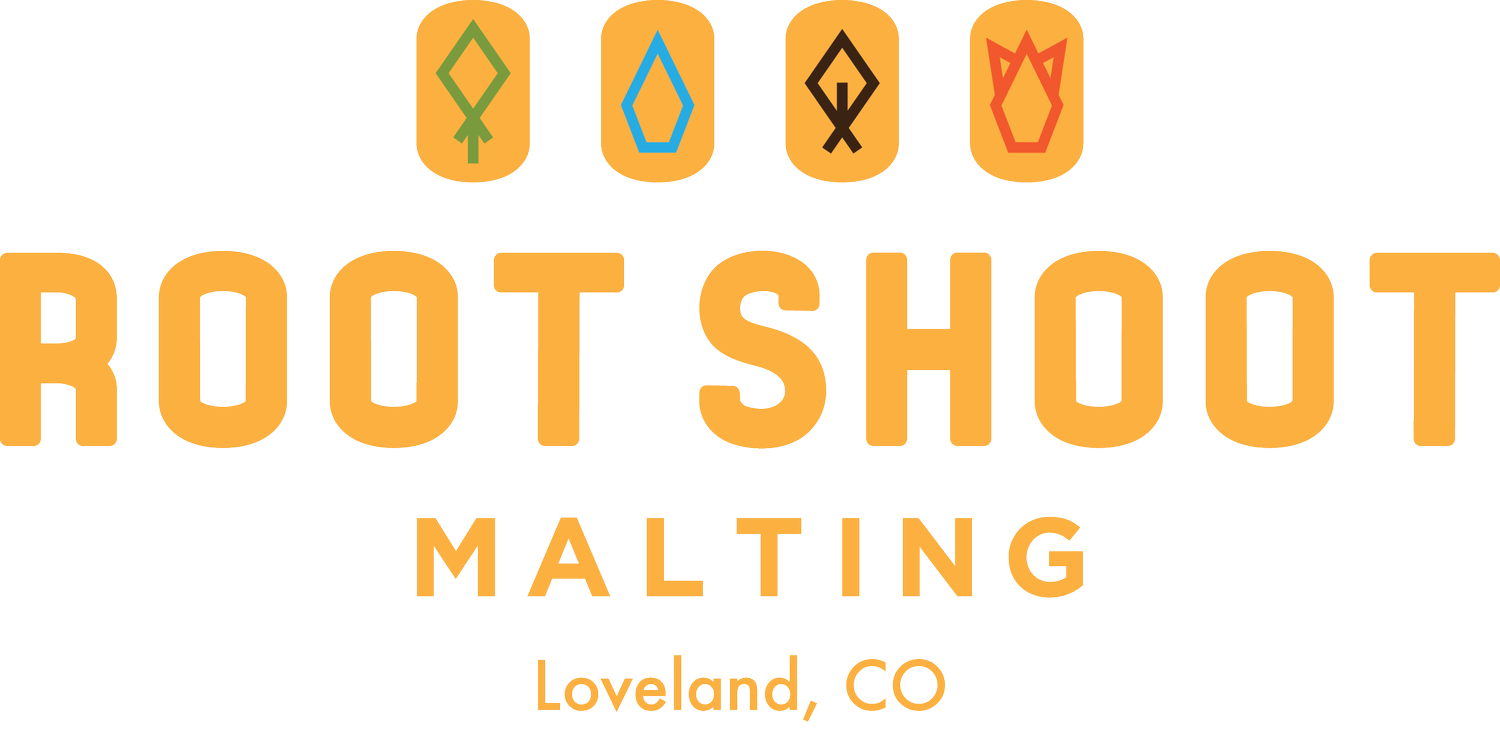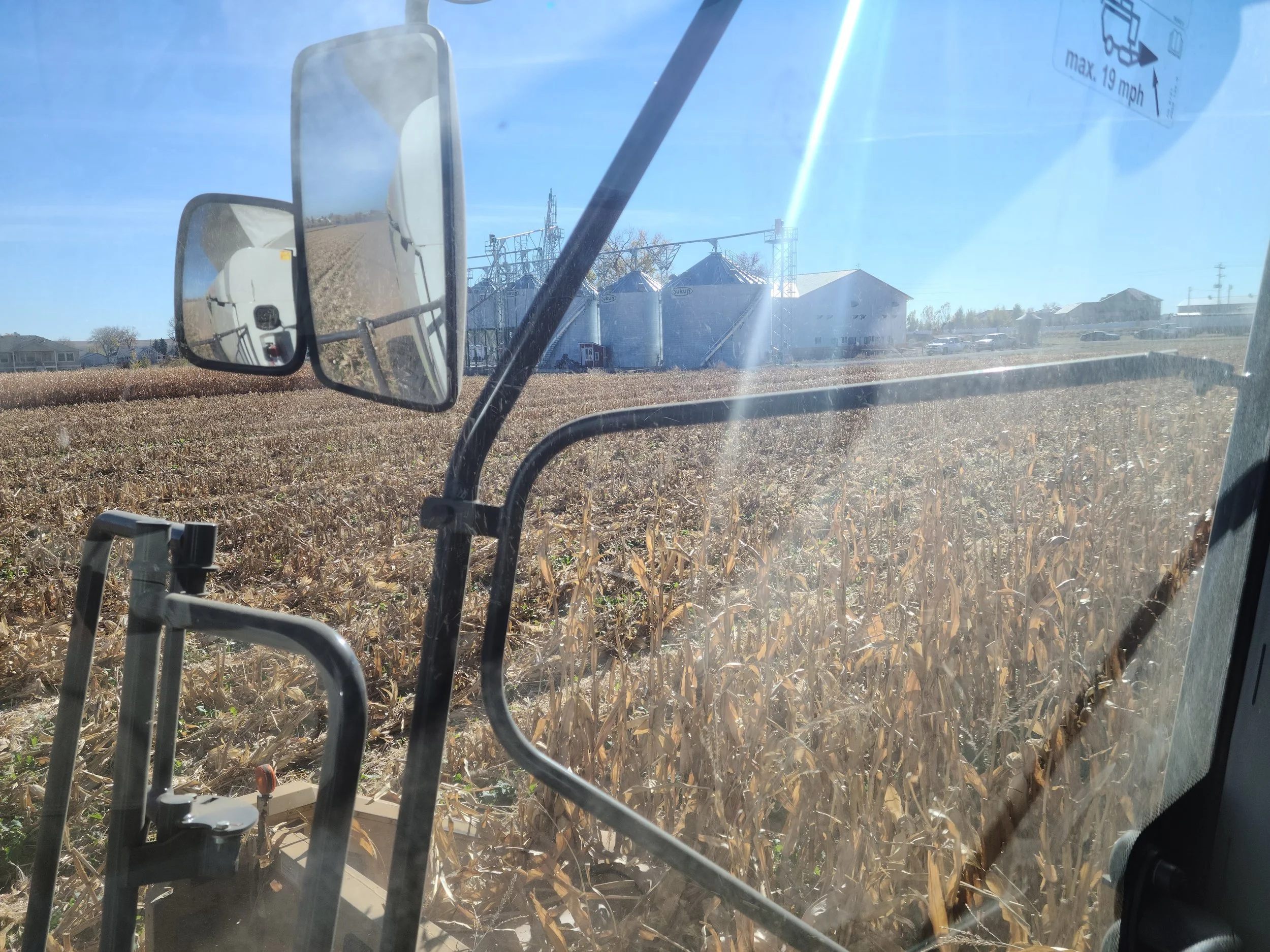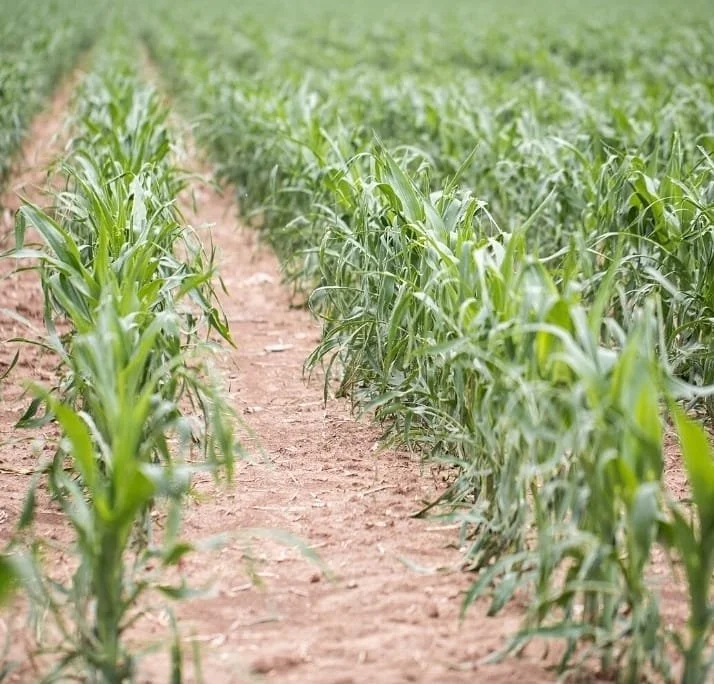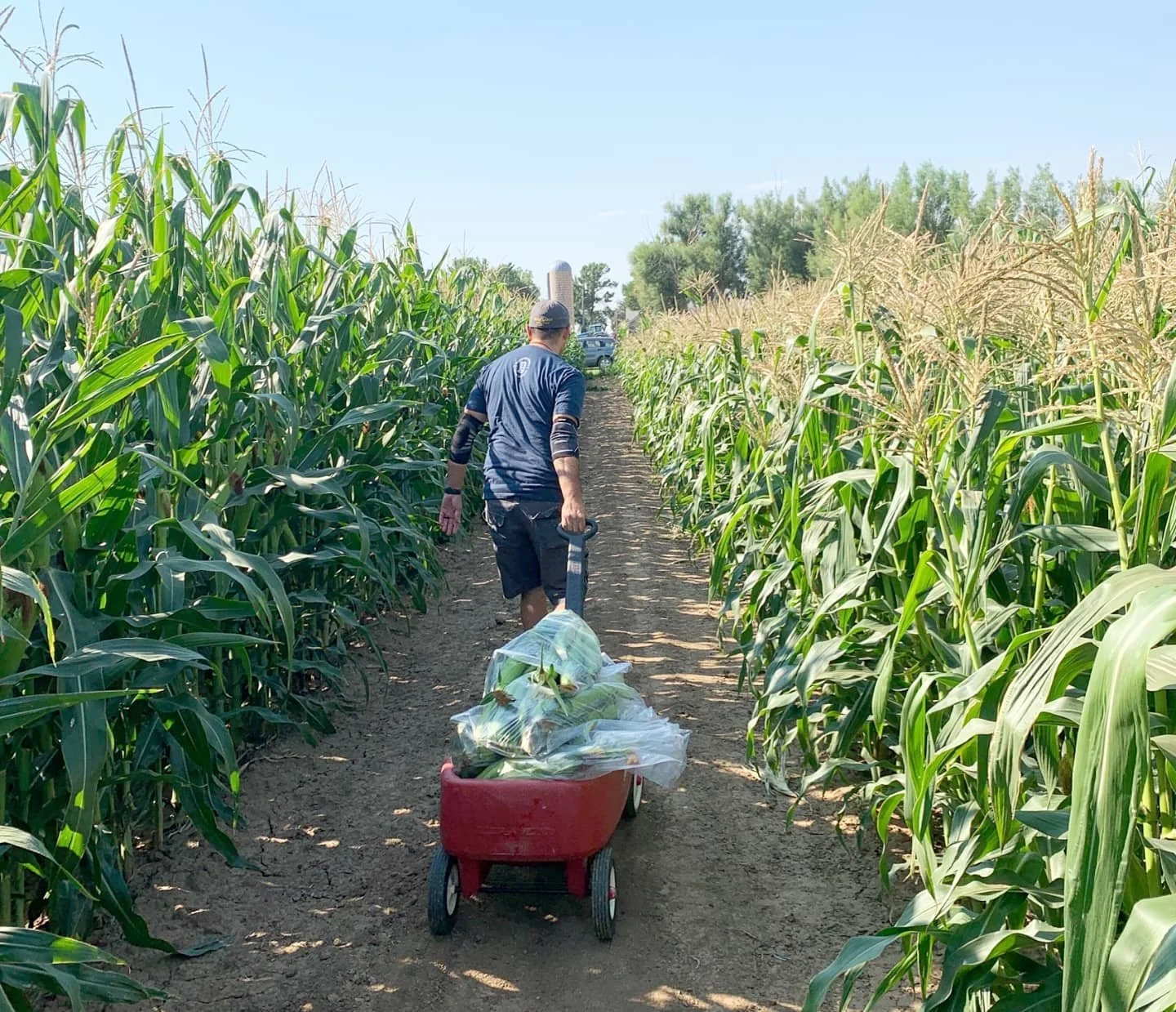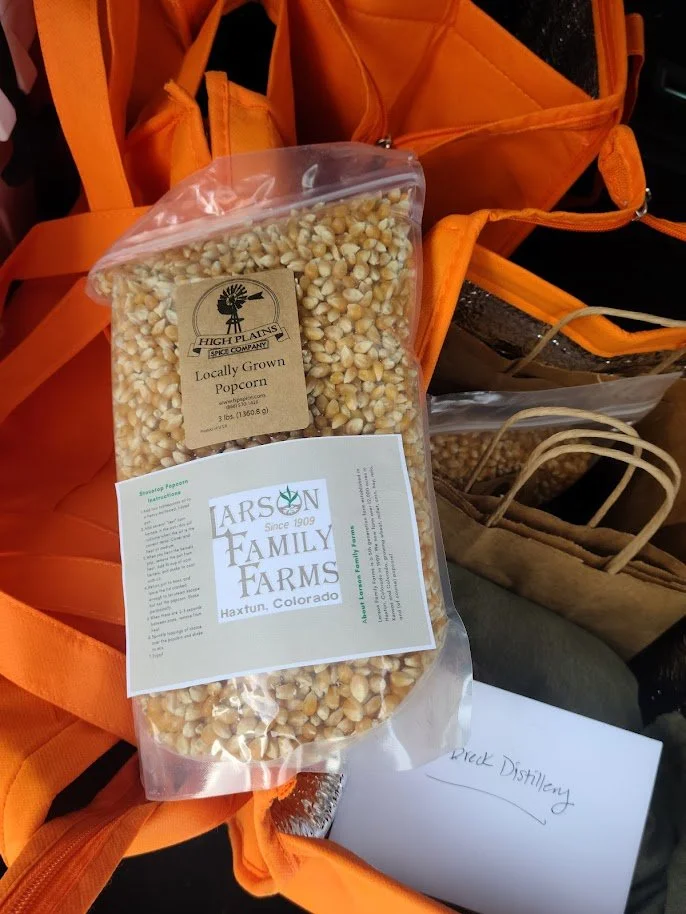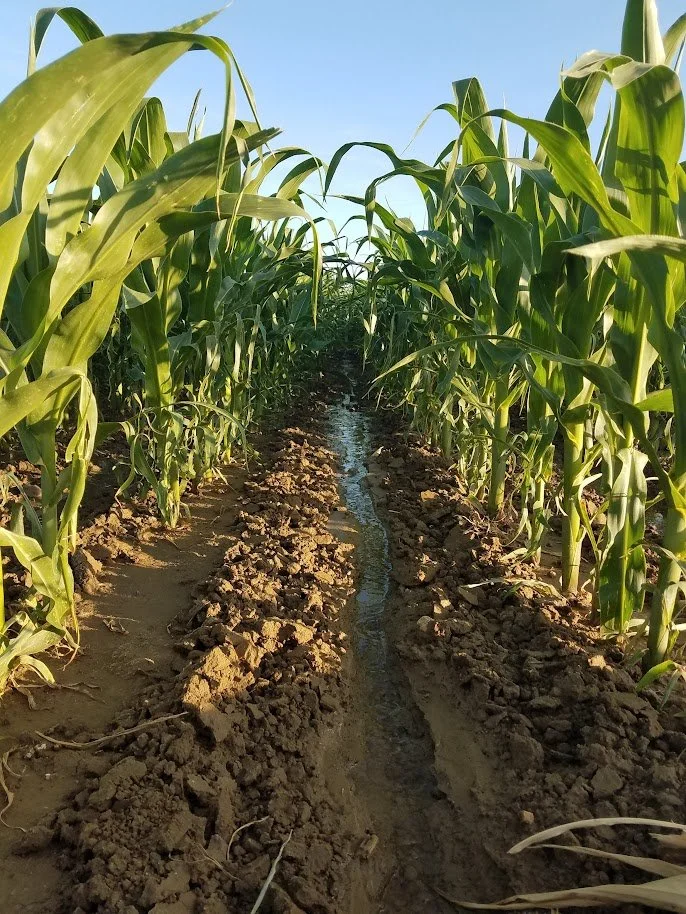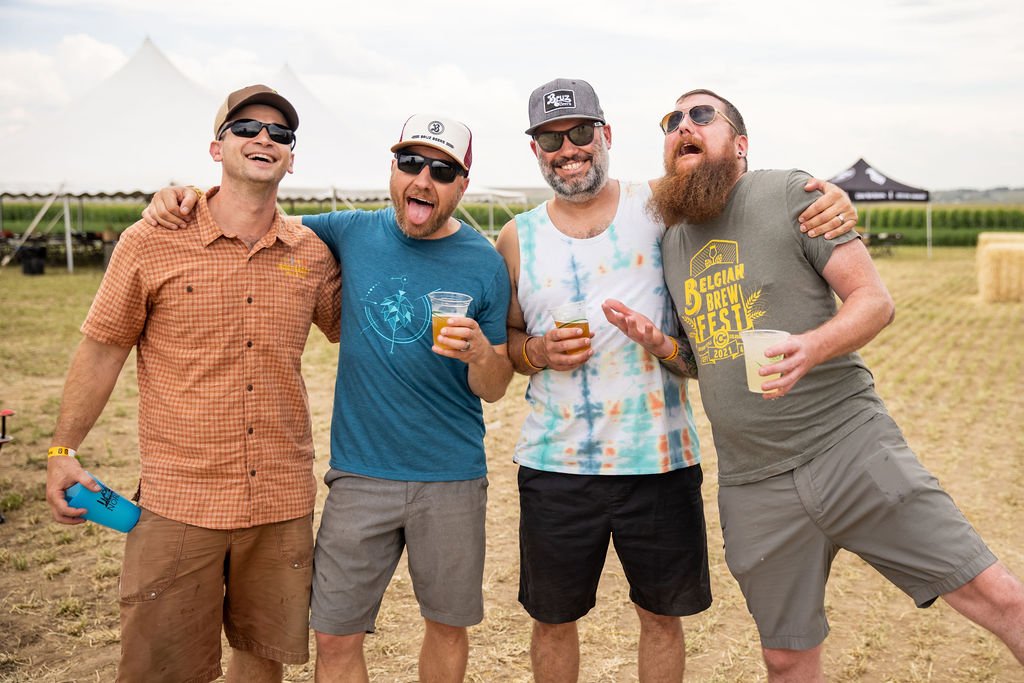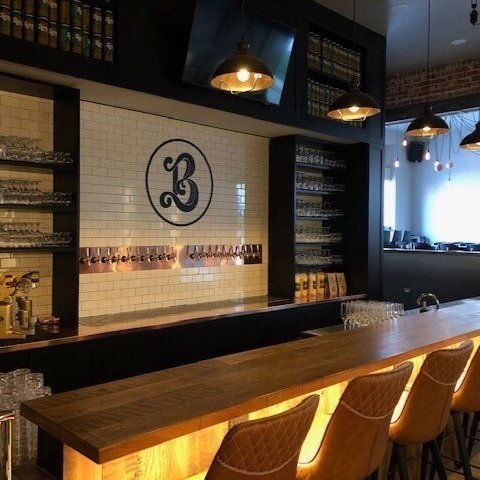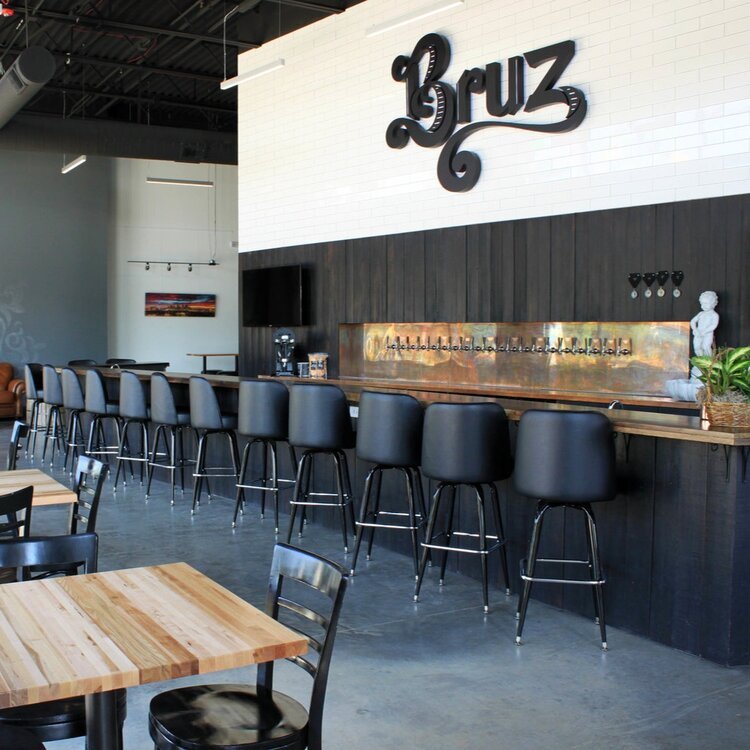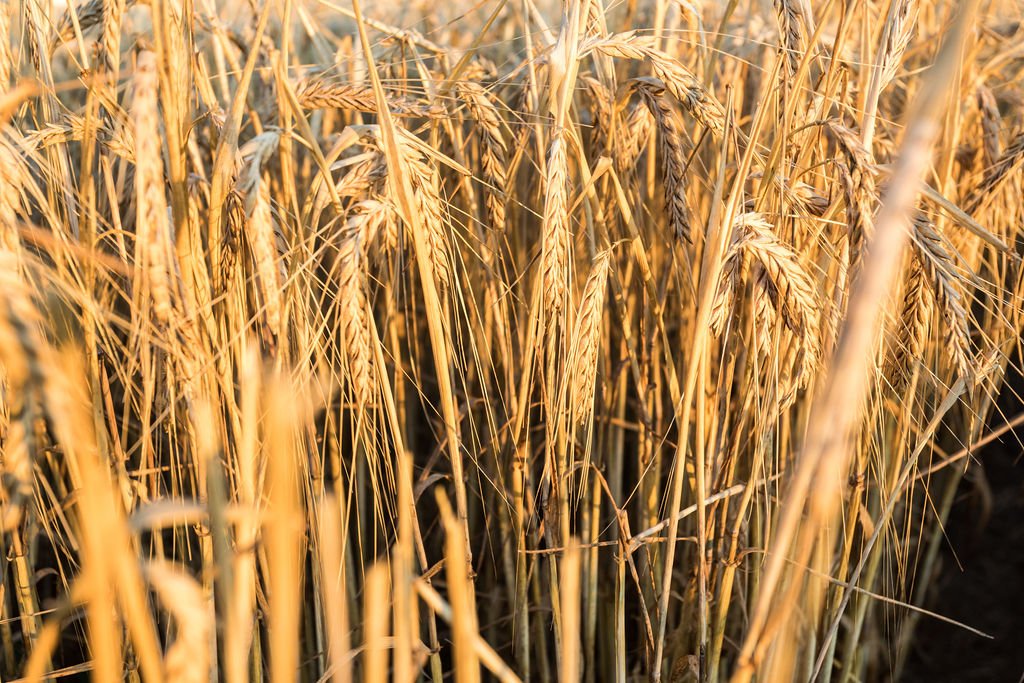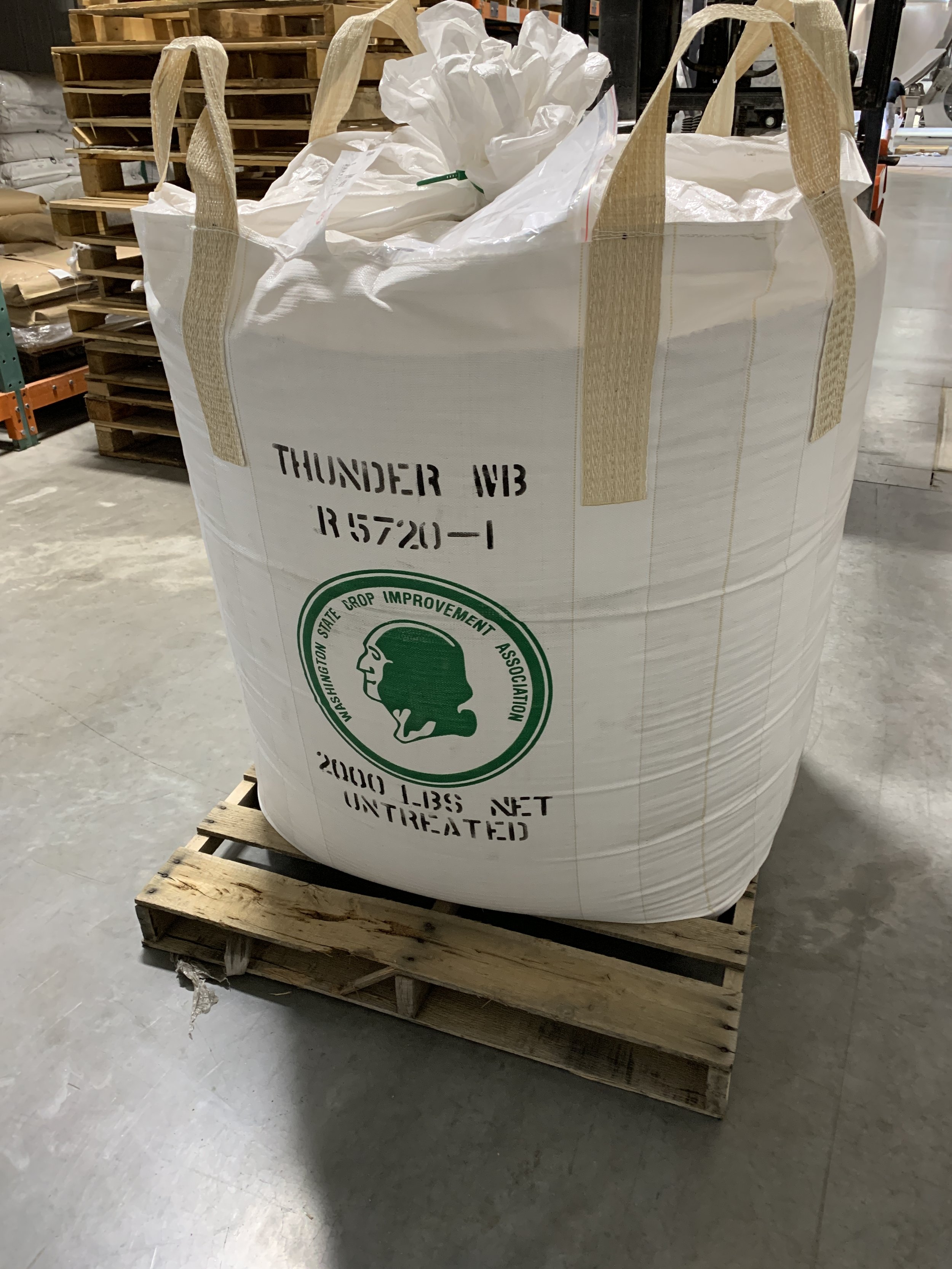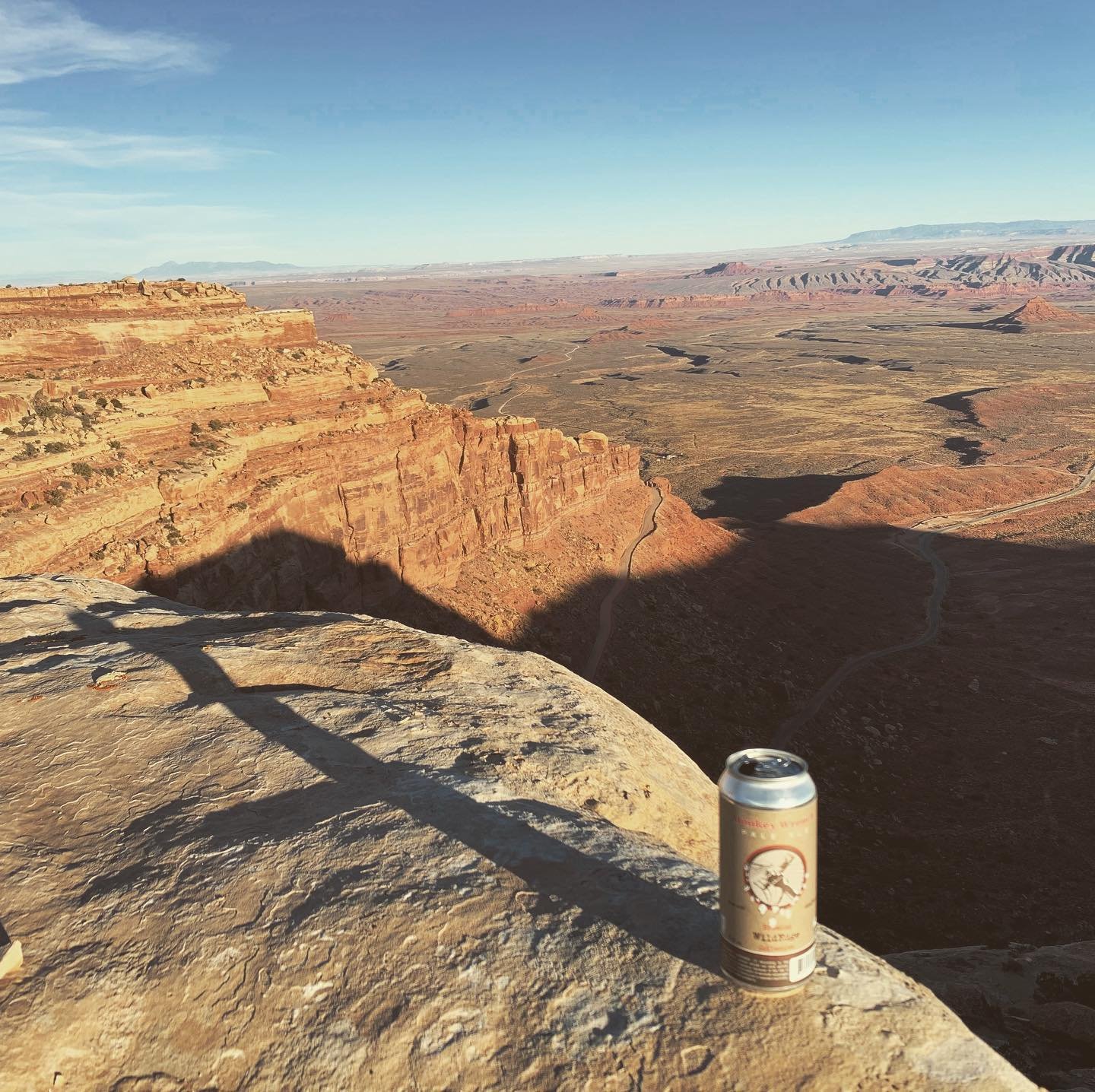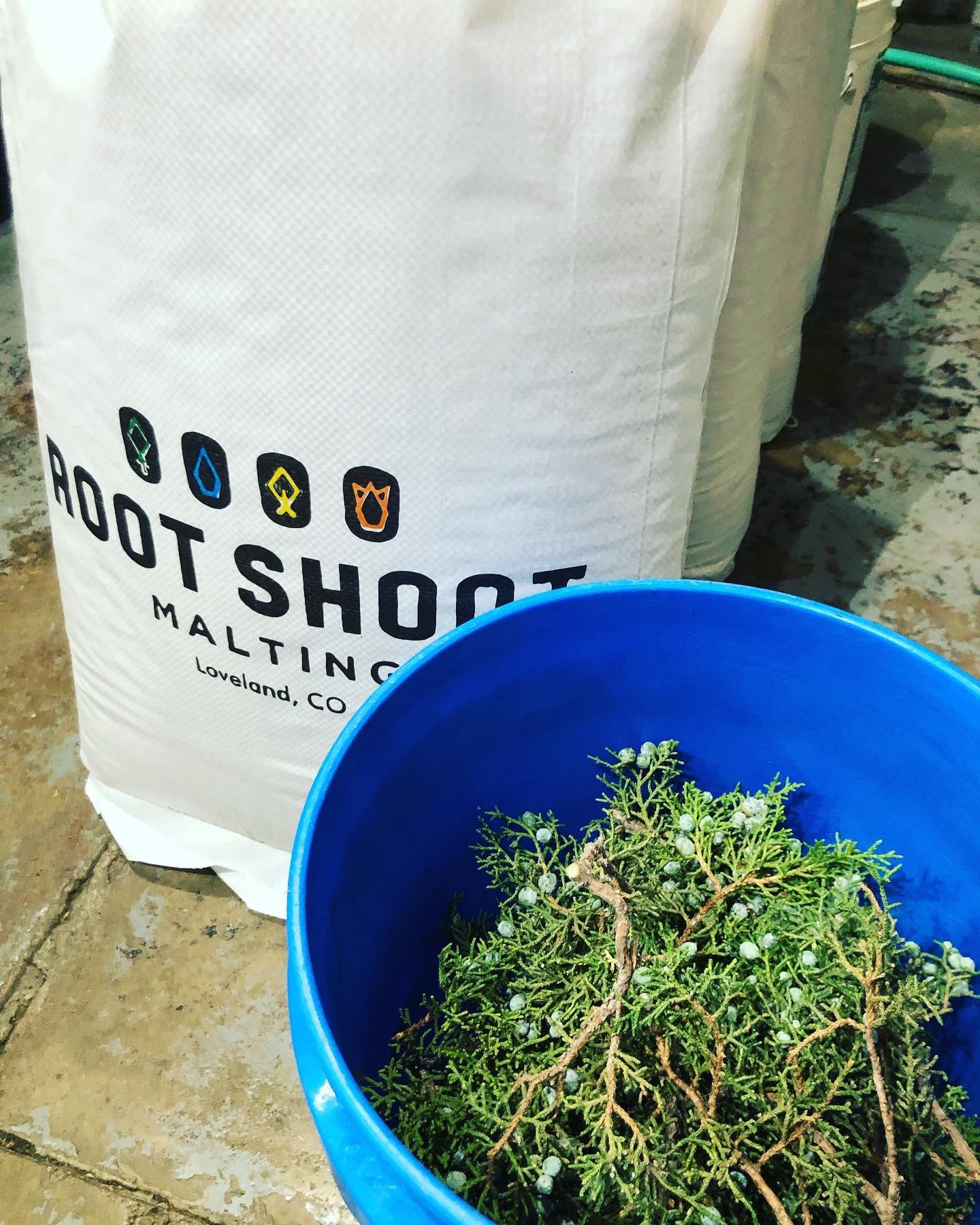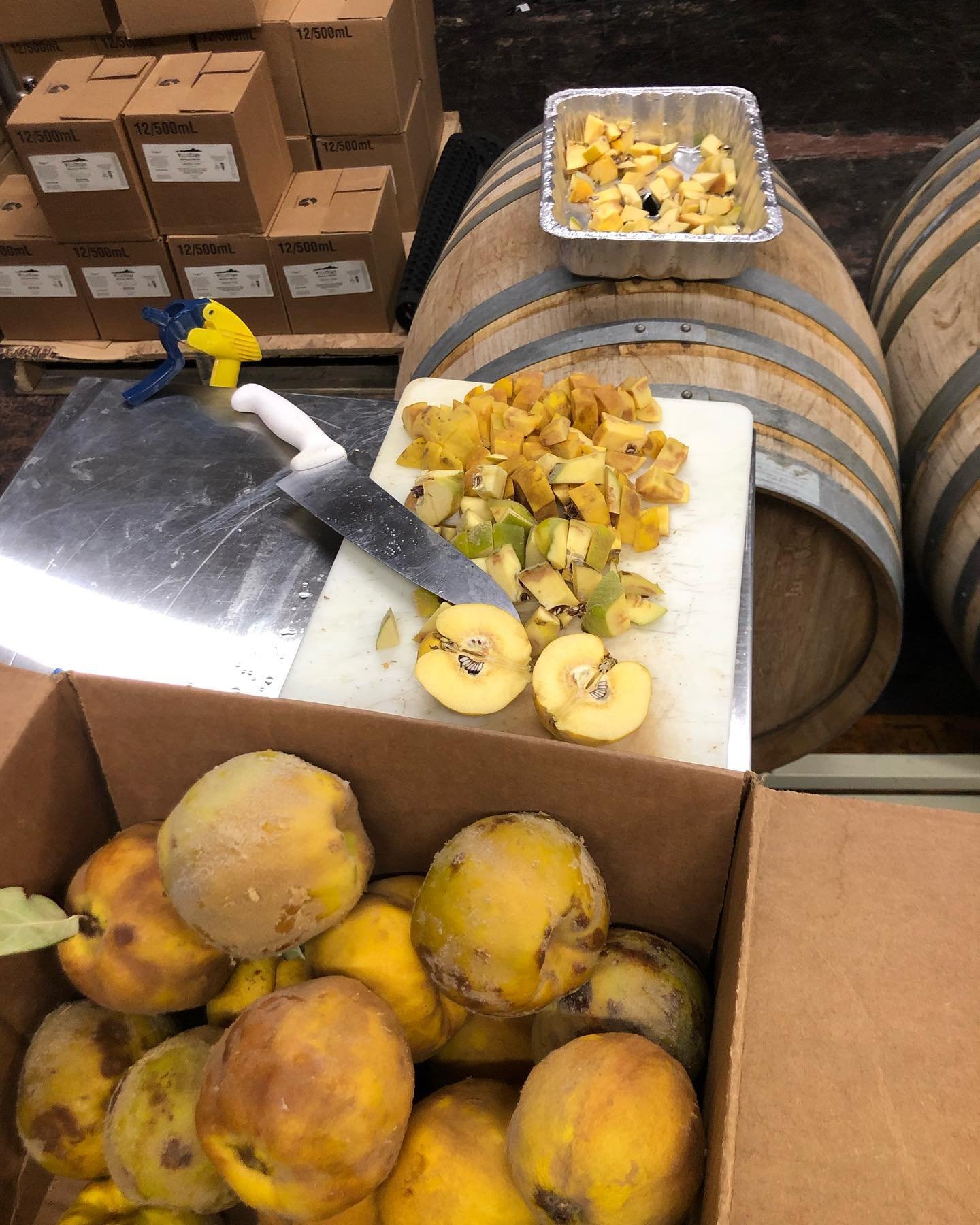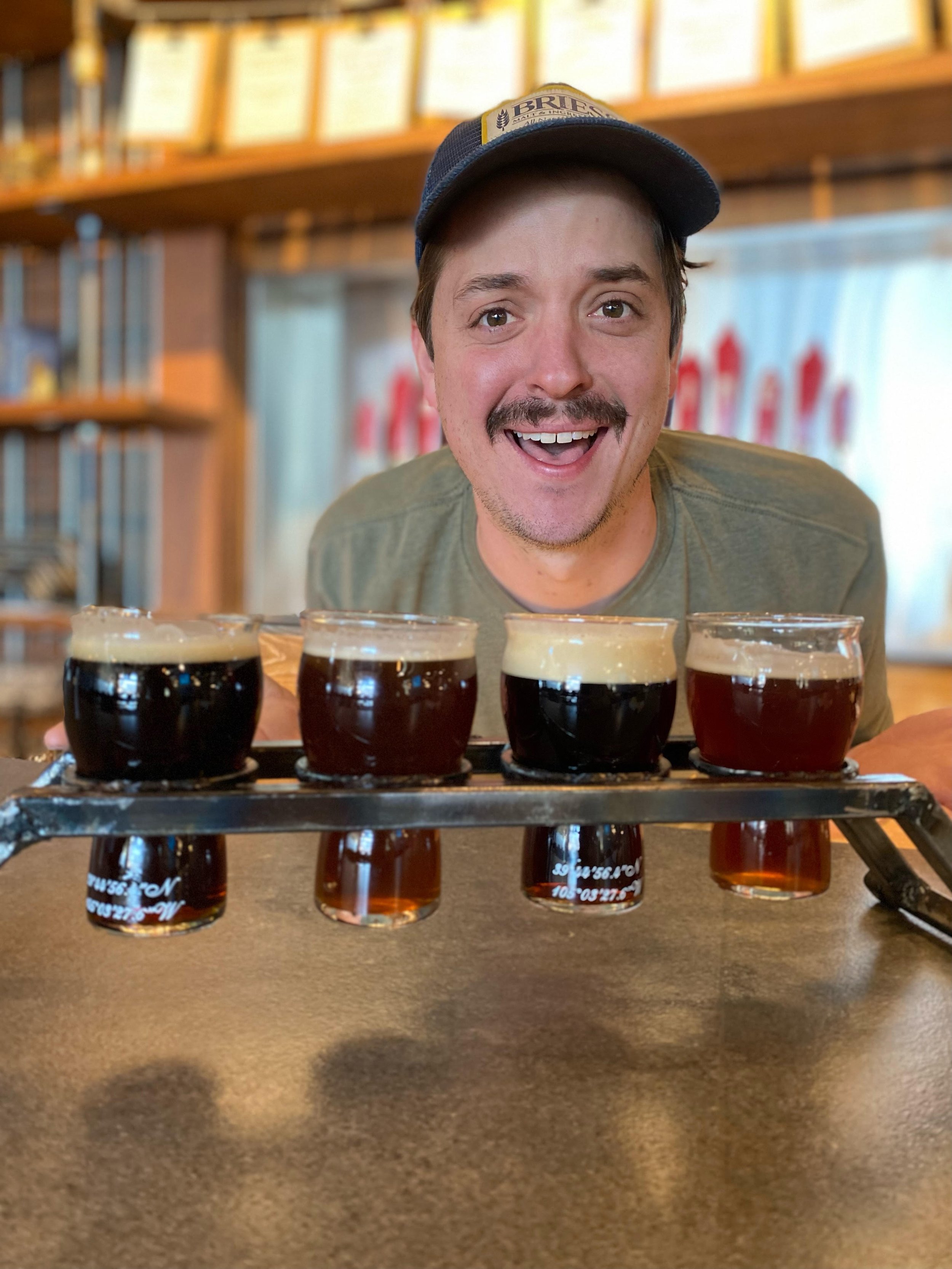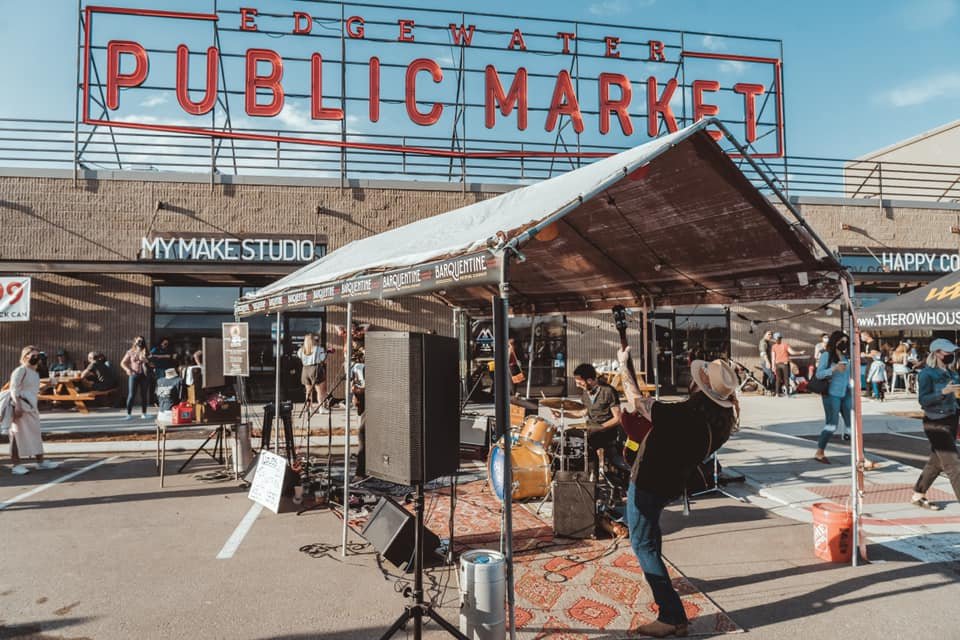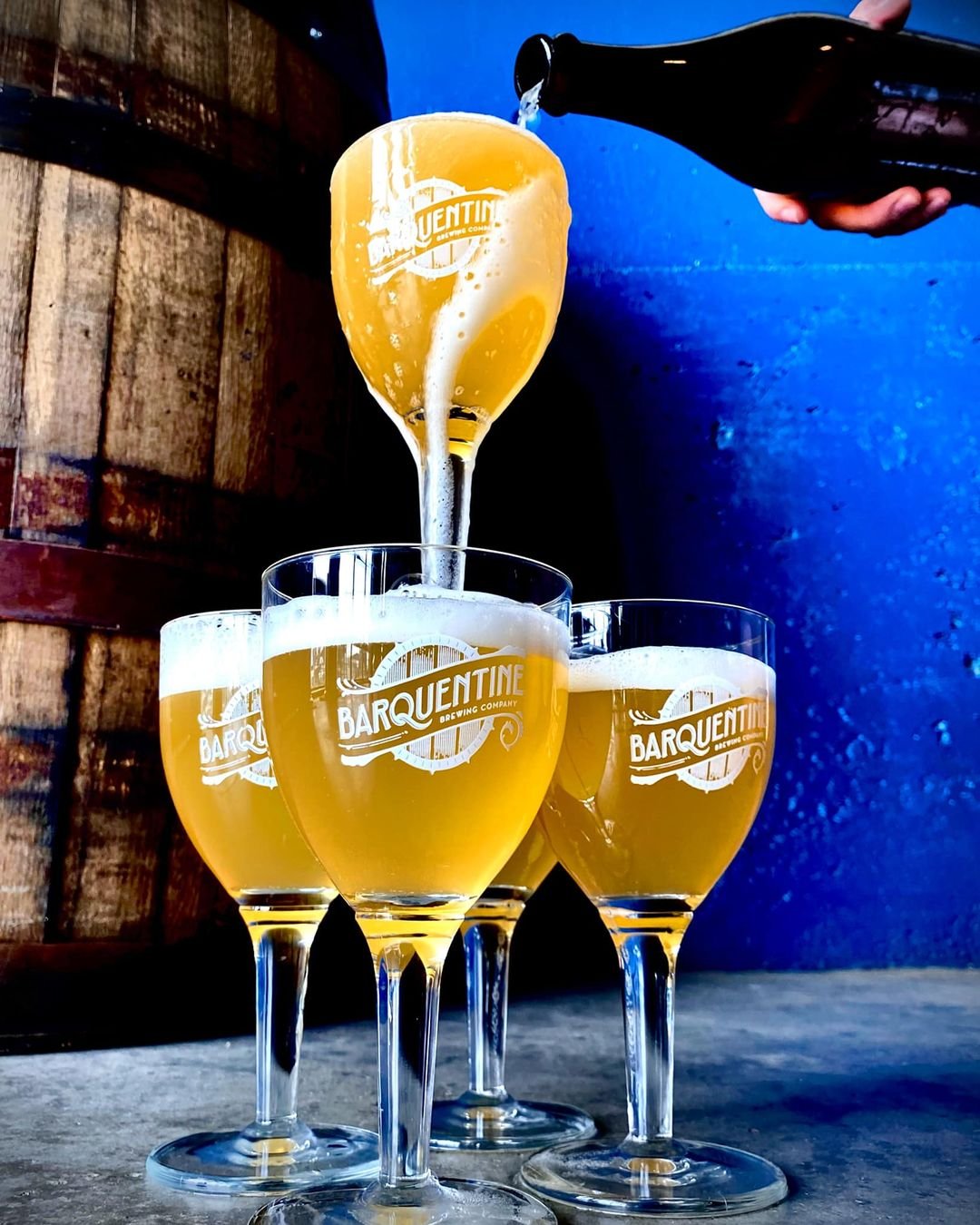November is typically when we finish up harvest here at Olander Farms.
By this time of year, we’ve spent nine months planting, cultivating, watering, and growing. From barley planting in March to corn harvest in November, we’ve been busily working away, growing your future beer and soon-to-be spirits.
Now, as we fire up the combines for one last harvest before winter, we’ve got corn on our minds…and in our bellies, our bourbon barrels, and on the menu for all the upcoming holiday feasts! Corn is a key element of what we do here on the farm, so this fall season, as we settle in with a bourbon in hand (it’s whiskey made from corn!) and a taco or two (corn tortillas!) we want to give a little crash course in this great grain: what we grow, what others grow, and why your popcorn at the movies isn’t the same as the sweet corn at your summer barbecues.
Corn!
We owe the existence of corn as well as its role as a flexible staple crop to the Native Americans who have been growing it for thousands of years. Developed from the seeds of a variety of grass called teosinte, corn was created by selective breeding over many, (many!) generations. The oldest signs of corn in Mexico showed over 10,000 years ago.
Think about that for a minute.
Imagine, if you will, the size of grass seed. Then, imagine the work and patience it would take to turn grass seeds into corn-size kernels without modern technology.
Generations of work. Lifetimes of patience. Incredible foresight on the part of those first humans who decided to try it. Growing, selecting, and planting, again and again over the centuries.
As corn has evolved, so have its kernels, its characteristics, and its uses, until arriving at its current state: Five primary types, three of which we grow here at Olander Farms.
Kickin’ it with some (tasty!) kernels
Flint Corn:
For us here on the farm, the flint corn we grow is our Abenaki heritage variety. Colloquially known as ornamental corn or Indian corn (we prefer to refer to it as a native variety) flint corn is multi-colored, with long, narrow cobs, and extremely hard kernels. “Hard as flint.” While most modern Americans use it only for decoration, and some mistakenly believe it isn’t edible or palatable, flint corn is actually the old-school variety of edible corn. It can be used as hominy, ground for flour, or - as in the case of our Abenaki - turned into a mighty fine polenta.
We’re also betting that it’s going to make a damn fine bourbon, as well.
We’ll just have to wait about four years (it’s gotta age in those barrels!) to find out.
Dent Corn:
Dent corn is the bulk of the corn that we grow and the bulk of corn grown in the US. Both our silage corn and our distillers’ corn are dent. Dent corn has a softer outer layer than flint as well as a higher water content, which means that when the kernels dry, they form a distinctive dent in the middle. Dent is starchy rather than sweet - you wouldn’t want to throw these ears on your grill in the summer. It’s typically grown for grain and fodder.
And bourbon, of course! Are you seeing a common theme in our corn-growing here? Bourbon, by law, must be 51% corn, so we are more than happy to oblige in providing it! And when providing corn in large quantities, dent is a no-nonsense workhorse. It’s a get ‘ er-done variety. It grows true, grows well, and serves as a worldwide food staple, especially for livestock.
Sweet Corn:
The golden child. The one that everyone loves. The corn that summer was made for and farmers market customers pine for. When you talk about corn on the cob for dinner, you’re talking about sweet corn. These varieties of corn are, not surprisingly, high in sugar, the result of a fantastically tasty recessive mutation that affects the conversion of sugar to starch in the kernel. We’ve been growing small plots of sweet corn for our family, friends, and malthouse visitors for years. Unfortunately, this means that we’ve also been growing sweet corn for marauding elk, thieving raccoons, and the occasional passing bear as well. But these critters come by because they know the #1 user tip for sweet corn: it stores terribly. As soon as you pick it, that delicious sugar in the kernels begins turning to starch. Leave it in the refrigerator too long, and it loses its flavor. For maximum taste, sweet corn should be eaten within 24 hours of harvest.
If you’re an elk snapping an ear in half straight off the stalk…well…
…at least you’ve got your timing right.
Popcorn:
Yes, it’s its own category. You can’t just pop the kernels of any old corn (at least not well, anyway.) Popcorn has a unique hull (hard and waterproof,) a unique starch content (mostly hard starch,) and a specific moisture content (14-20%) that give it its ability to essentially…blow itself up. It turns itself inside out to make that fluffy deliciousness we all love.
Fun fact: It takes a pressure of 135 psi and a temp of almost 400 degrees Fahrenheit to pop a kernel of popcorn. As a reference point, the average pressure in a car tire is 32-35 psi.
Yowza.
While we love to eat it, we don’t grow it because…well, you can’t turn it into spirits very well. (We’re a little bourbon-focused, if you have noticed!) Plus, we have friends who do the job much better! Looking for locally-grown popcorn? Check out Larson Family Farms, our friends on the eastern plains who grow hundreds of acres of the stuff!
Flour corn:
Most frequently a type of flint corn, flour corn consists of super soft starches (unlike popcorn’s hard starches) that can easily be ground into a soft, fine flour - much softer and finer than other corn varieties could produce. Flour corn is the stuff of cornbread and tortillas, the belly-filling, taste-bud pleasing, ingredient that makes Taco Tuesdays possible. Without flour corn, we’d be living in a world without tacos. And a world without tacos…
That’s a nightmare we can’t fathom.
And finally, but most importantly…Dad Jokes:
Really, now…did you think we could actually get through a post on corn without a reference to corn-y jokes? Especially ones related to agriculture?
No way. No how. No ma’am.
Q: What did the corn say when he received a compliment? A: Aw, shucks.
Did you know that if you want to buy pirate corn, it’s going to cost you a buccaneer?
Q. What happens if you swallow a whole corn cob? A: You get corn-stipated!
Did you hear about the mama corn who wasn’t worried about her chubby son. “He’s not fat,” she said, “he’s just a little husky.”
Should we keep going? No? Yes? We’ll let you decide! A plethora of really bad (by which we mean GREAT) corn jokes can be found here.
Use ‘em at the Thanksgiving table to make your family groan and your kids blush with embarrassment.
Because what else are family meals about? Good food, good drink, bad jokes.
And hopefully, some locally sourced grain.
From ours to yours,
A happy month of gratitude and Thanksgiving.
—Olander Farms
